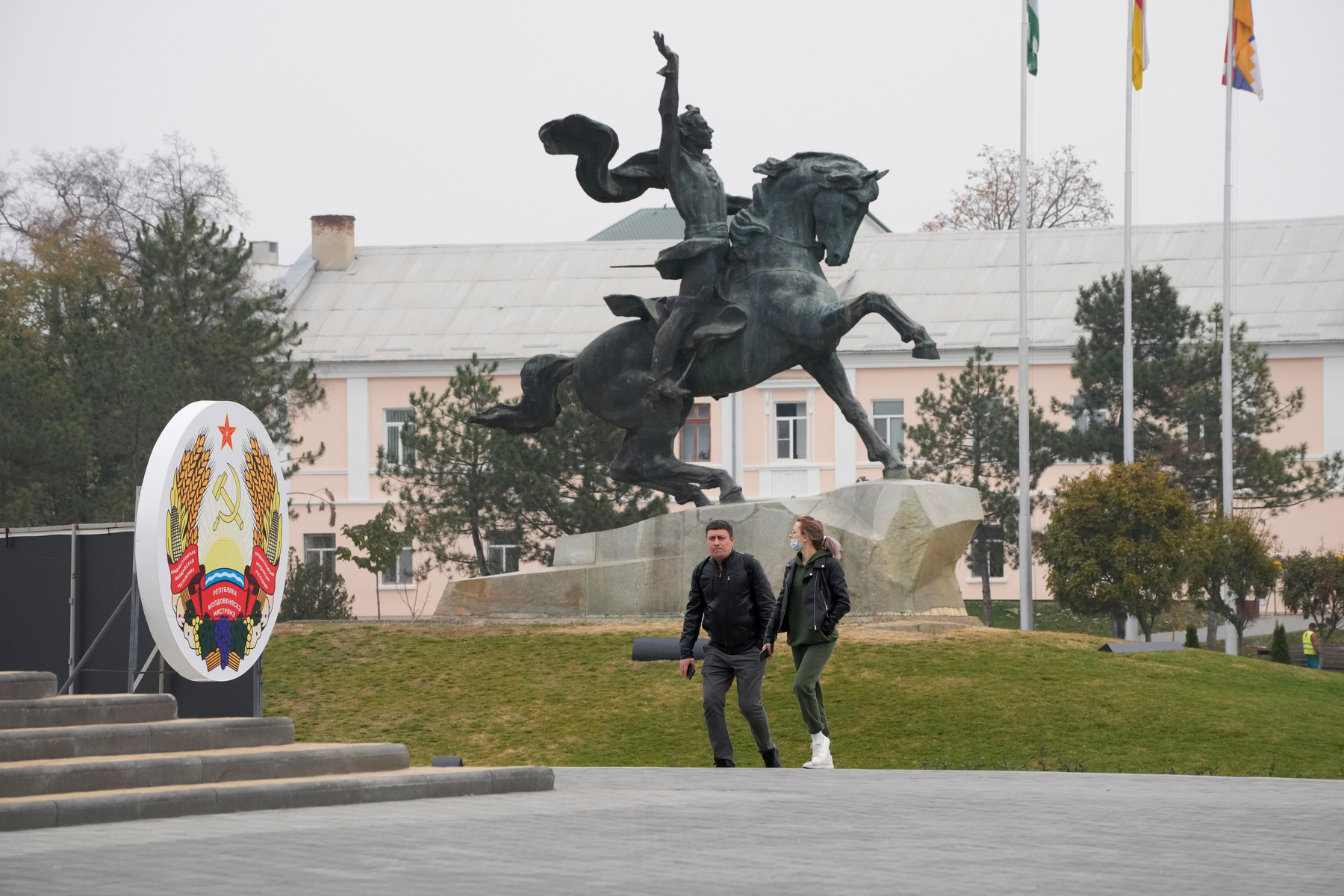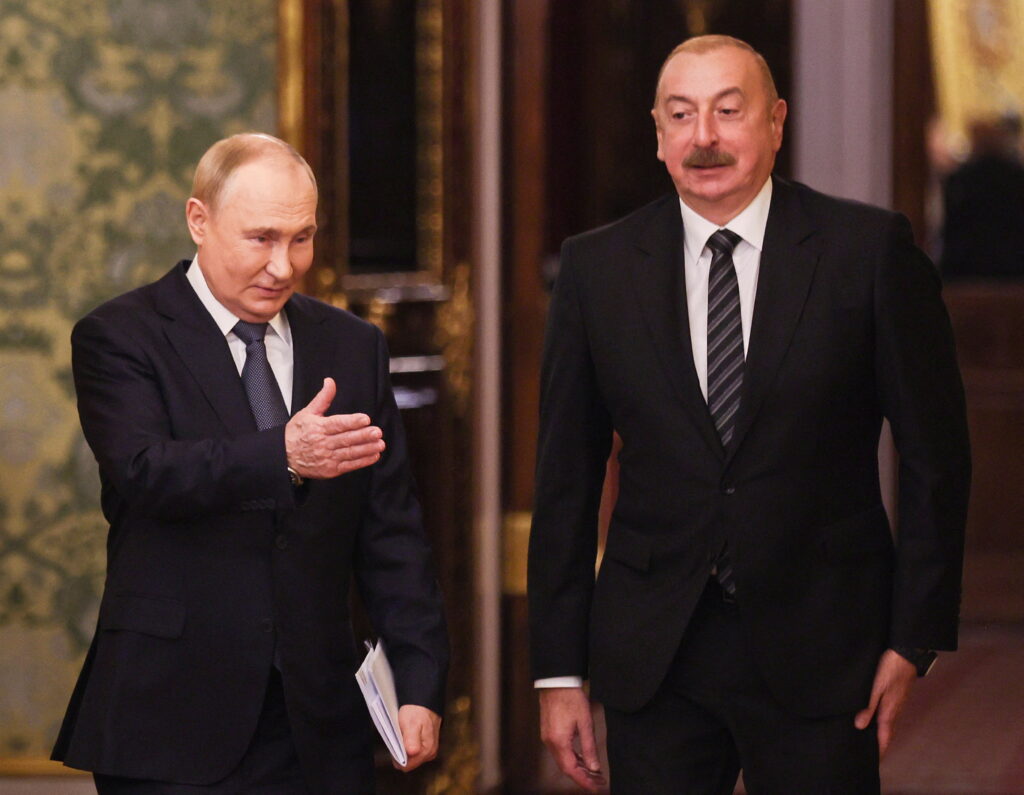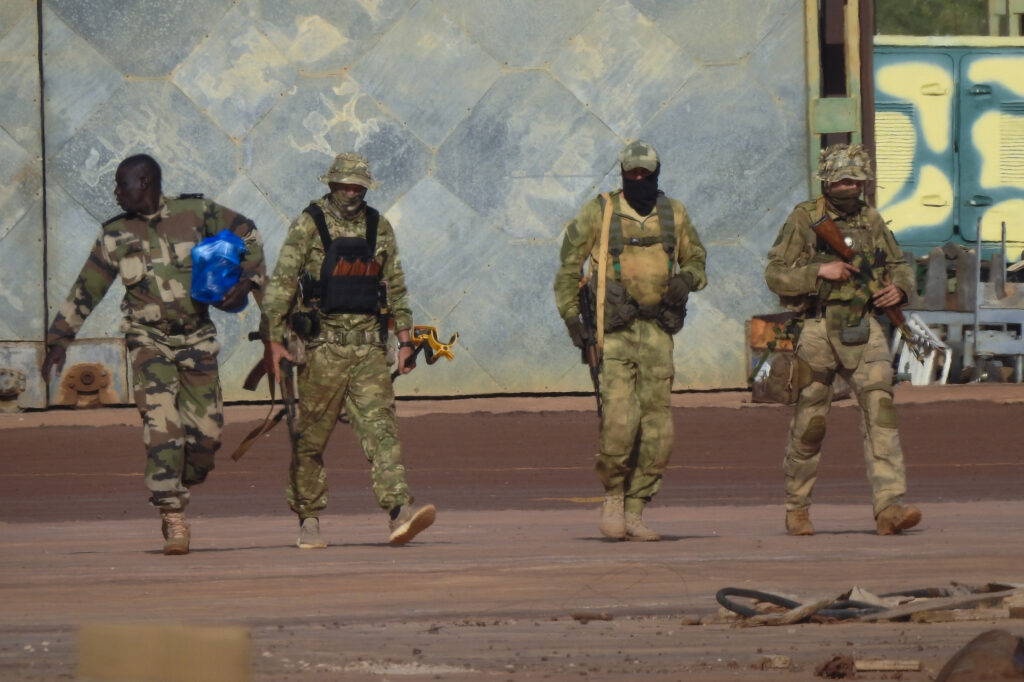Longstanding fears are heightening that Transnistria, a Russia-backed breakaway region of Moldova, could be used as another launchpad for Russia’s military. A series of provocations rocked the territory there between April 25 and 28, all while worsphippers celebrated the first weekend of Christian Orthodox Easter. These were explosions targeting a law enforcement building and several points of critical infrastructure. No casualties have been reported. Many analysts in southeastern Europe are left to wonder: is this a harbinger for further destabilisation in and around this frozen conflict zone?
With fighting in Ukraine ongoing, it is easy to see the potential relevance of an area like Transnistria to the conflict. Bordering Ukraine and close to the strategic seaport of Odessa, it spans roughly 10% of Moldova’s internationally recognised territory — an area of 4,163 km² across the Dniester River. Moldova has not controlled the separatist region of Transnistria since a war in 1992 and Russia has kept a limited military presence there ever since.
That said, it is worth taking stock of Transnistria’s own local political complexities before concluding whether this breakaway state is at all placed or inclined to play any part in hostilities. Home to roughly 351,000 people, Transnistria’s main concern with the conflict right now is how the fighting has forced it into a trade dependency on the country it has broken away from. The war means the only way for imports to reach Transnistria right now is via the rest of Moldova. This has allowed Chisinau more leverage to impose rules on Transnistria, though Transnistria’s officials have been digging in their heels and speaking out vociferously, accusing Moldova of causing a blockade in the supply of some medicine, fertilizers, or agrifood. The recent destabilization attempts over Easter have actually led to limited progress on the so-called «blockade» problem, as Moldova accepted a one-month exemption from environmental rules, facilitating scrap metal imports by Transnistria.
Decades of failed solutions
Fraught relations between the Moldovan capital of Chisinau and Transnistria’s de facto leaders in Tiraspol is not new. Nor are flickers of hope. Over the last 30 years, more than 200 agreements were signed between Chisinau and Tiraspol. The ones that have stood out have been the 1997 Primakov plan; the 2003 Kozak Plan; or the 2005 Iushenko plan. These suggested broad solutions that would lead to Transnistria’s reintegration, but stopping short of fully benefiting Moldovan sovereignty. From 2005, Moldova took a harder line, adopting a law on the special status of the eastern regions of Moldova, meaning the Transnistrian region, which would not permit any official negotiations between Chisinau and Tiraspol. The same law advocates for a status where Transnistria is a territorial subject of Moldova, without any veto rights, and which should undergo a comprehensive process of demilitarization and democratization. The law can be still changed with 3/5 of the members of parliament. Then, by 2012, Moldova opted for a softer touch: the bilateral and multilateral negotiations were resumed during the government of Vlad Filat (in which Maia Sandu was the Minister of Education). The last time when the parties of the «5+2» format met was 3 years ago, in Bratislava (2019). The administration in Tiraspol has for a long time argued that Moldova has started applying economic restrictions since 2006, when Moldova and Ukraine established a stronger cross-border cooperation on all exports coming out of Moldova, including the separatist region. One of the outcomes of this cooperation was the launching of the EU Mission of Assistance (EUBAM).
All the while, Transnistria’s largely pro-Russian stance is well documented and longstanding. In a 2006 referendum staged by the unrecognized administration of Transnistria, 97.2% of the population supported the idea of joining Russia. This dovetails with Russian propagandists’ broader vision of uniting the Russia-oriented territories of Ukraine and Moldova, stretching from Donbass to Crimea, Odessa and Transnistria, under Moscow’s geopolitical umbrella. This concept, which never fully materialized, is also known as «Novorossiya». It resurfaced after the annexation of Crimea in 2014 and the creation of breakaway republics in the Donbass region of Ukraine, and linking up a land bridge to Transnistria has been touted as a possible war aim by a few of Russia’s military planners this time round.
The destabilization: the political and geostrategic consequences
That is why any explosions in Transnistria are bound to set alarms ringing. A series of false warnings of bomb attacks reported by Tiraspol in March and April, however, were not rigorously examined in Chisinau and completely ignored abroad in the West. On those occasions, the separatist administration began to warn that there are attempts to destabilize the region. Only after the provocations involved real explosions did the Moldovan side, followed by Western partners, more openly express interest in observing the local dynamics of the region.
The destabilization actions began on April 25 with the launching of grenades from hand-held anti-tank rifles at the breakaway region’s so-called Ministry of Security of Moldova. This was the beginning of a series of attacks on critical infrastructure of the region, which were described as terrorist acts. They included the blowing up of two essential antennas for receiving Russian radio channels in Grigoriopol, the small-scale explosion at the military airfield in Tiraspol, and the shooting at the military tent in Colbasna. A day after the attack on the intelligence service of the Transnistria region, the region’s administration introduced a 15-day «red code» terrorist threat.
Who is to blame and why? The Russian side accused Ukraine of being responsible for carrying out diversionary actions in the breakaway region of Moldova. By contrast, the Ukrainian authorities have linked the destabilization of Transnistria to a larger operation by Russia to deploy military forces by air and then direct them to the Russian effort in Ukraine to seize Odessa.
Some hardline voices such as Alexey Arestovych, the adviser to the head of the Ukrainian presidential administration, Andriy Ermak, have suggested that Ukraine, if requested by Moldova, could take control of the Transnistrian region, including with the help of Romania. Volodymyr Zelensky or other top politicians in Ukraine with executive powers do not share Arestovych’s views, at least openly. This proposal was officially rejected by the Moldovan Reintegration Office, which reiterated that Chisinau is ready to apply only peaceful means and that the solutions are political in nature.
In fact, the Moldovan side has been avoiding singling out Russia when talking about possible suspects in the provocations. Instead, it has referred to infighting within local elites, where pro-war forces seek ways to drag the region into war. The leader of the separatist region Vadim Krasnoselskiy ridiculed this line of argument suggested by President Maia Sandu, confidently stating that Tiraspol has information about who the perpetrators of the provocations are. No names were revealed, but the official statement from Transnistria is that Kyiv is the only interested party. Moscow maintains the same narrative, which «condemned» the provocative acts that seek to push the region into the war in Ukraine.
This contradicts the news about the participation in the destabilization of a ring of alleged Russian spies, under the coordination of Major General Vitaly Leonidovich Razgonov, a resident of the region since 2019, who happens to be an adviser to Krasnoselsky. This information was leaked to the Moldovan and Romanian media on April 28. Made up of local politicians, journalists and public activists, the group of Russian spies would carry out actions received in particular from the Russian army headquarters. The authenticity of the list has not been confirmed, but those who exposed it presented themselves as anonymous representatives of the region’s Ministry of Security.
An escalation against Moldova or Ukraine, or both?
Under Russia’s recently shifted military emphasis to occupy southern and eastern Ukraine, the pressing question is whether the destabilization of Transnistria is related to Russia’s military interest in exploiting the breakaway region’s military potential against Moldova’s constitutional territories or rather to open another front against Ukraine. A third option is that the provocations were used against both Moldova and Ukraine, involving a mix of interests from inside Transnistria.
If destabilization was bound to trigger reactions from Ukraine, they definitely did not come from the political and economic elites of Transnistria. The latter have maintained neutrality since the war broke out in Ukraine. Not even Russia has a strong interest in inflicting serious costs on its strategic interests in Moldova and damaging the resilience of the Transnistria region. It is not ruled out whether the military in Moscow would be eager to open another front, but such a scenario requires the Russian army to make major territorial gains toward Odessa.
Strategically, targeting Moldova does not make much sense; the country is already vulnerable and dependent on Russia, mainly in the field of energy. In addition, the extension of the war against Moldova will generate a new wave of sanctions against Russia and the elites and companies of the Transnistria region. Russia would rather have a neutral Moldova locked in tricky territorial conflict rather than support an invasion of Moldova by Transnistrian forces. Russia’s military priority remains Ukraine.
It may be that the explosions in Transnistria were aimed at controlling the reactions of Ukraine, Moldova and the West in general. There could have been some interests intertwined with threads from Tiraspol and Moscow. Local agendas are more interested in getting rid of what they call the «Moldovan-orchestrated blockade». As fears of destabilization increased, Transnistria managed to attract more international attention and also put pressure on Chisinau, scoring some early successes in the field of scrap metal imports. Those in Moscow who approved of the destabilization operation might have wanted to see how Ukraine operates and cooperates with Moldova. Perhaps, Russia is also willing to see what kind of support the West is willing to provide to Moldova, a neutral state.
Moldova’s underdeveloped defense capabilities
The destabilization of the Transnistrian regions has reopened a theoretical question of whether Moldova can protect itself against possible Russian aggression through the Transnistrian region. This scenario is not classified by Moldova as very likely because the country relies on its neutral status and the fact that it advocates a peaceful solution to the situation in Ukraine, as well as to the Transnistrian conflict.
On April 27, President Maia Sandu assured the population of the country’s constitutional territory, which has 2.7 million people, that «according to their [her] assessment, there is no immediate danger, at least for the citizens of the right bank [of the Dniester River]». However, she seemed less hopeful about the situation of the population inside the Transnistria region, where the Moldovan authorities have no say.
The Moldovan government counts too much on the country’s constitutional neutrality status, while the actual capacity of the Moldovan army to protect the national territory is questionable. The 2010 Strategic Defense Assessment of the Moldovan military forces revealed serious shortcomings, showing that the army cannot effectively fulfill the defense objectives prescribed by the Constitution and the 2003 national defense law. According to the results of the 2010 assessment, Moldova lacks a strategic vision on the structure of the army in times of war and peace: moreover, due to chronic budget insufficiency, the army has outdated physical and moral military potential, which also affects defense from aerial missile strikes, possible for only 10% of the country.
Conclusions
Both the administration of the breakaway region of Moldova and Moscow have reiterated their lack of interest in dragging the breakaway region into the war. The Russian side even emphasized that it supports the territorial integrity of Moldova, based on the principle of neutrality. However, such statements should be taken with caution. If Russia makes significant territorial gains in Odessa, it will be a game-changer in the behavior of Transnistria, which now has a pacifist flag. In any case, if hypothetical aggression by Transnistria is admitted, it will probably be directed at Ukraine, which is Russia’s urgent priority, not at Moldova.










